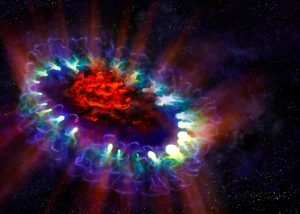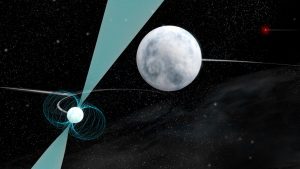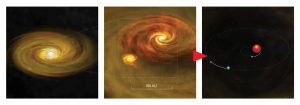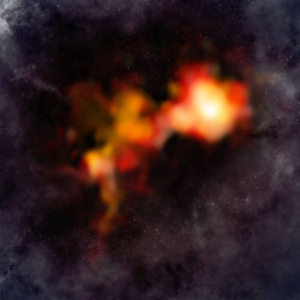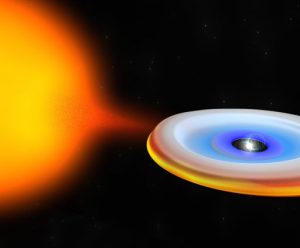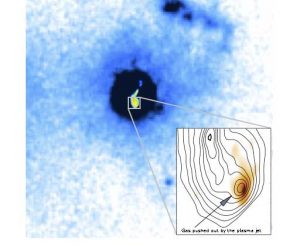Galaxies can be remarkably dusty places and supernovas are thought to be a primary source of that dust, especially in the early Universe.
Pulsar in Stellar Triple System
Astronomers using the GBT have discovered a unique stellar system of two white dwarf stars and a superdense neutron star, all packed within a space smaller than Earth’s orbit around the Sun.
New Studies Give Boost to Binary Star Formation Theory
Using the new capabilities of the upgraded VLA, scientists have discovered previously unseen binary companions to a pair of very young protostars.
Starless Cloud Cores Reveal Why Some Stars Are Bigger Than Others
Massive stars – those at least 8 times the mass of our Sun – present an intriguing mystery: how…
‘Jekyll and Hyde’ Star Morphs from Radio to X-ray Pulsar and Back Again
Neutron star morphs from radio to X-ray pulsar and back again.
Powerful Jets Blowing Material Out of Galaxy
Astronomers using a worldwide network of radio telescopes have found strong evidence that a powerful jet of material propelled to nearly light speed by a galaxy’s central black hole is blowing massive amounts of gas out of the galaxy.






